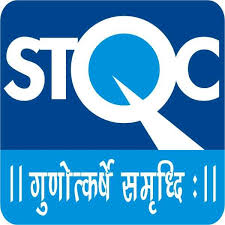Based upon the complaints received from the Indian companies, the disputes can be broadly categorized in to six categories. The details under these categories and the modus operandi adopted by the Chinese companies are mentioned below:
i. An Indian company is contacted by the Chinese company for business. After several rounds of emails and phone calls, the Chinese company invites the Indian company to visit their facility in China and meet the executives of the Chinese company and senior officials of the local Government, projecting this as an apparent exercise at confidence building. The Indian company agrees to visit China. Just before the departure of executives of Indian company, the Indian company receives a request from the Chinese company to bring cash for arrangements and gifts for the senior executives and other local officials, citing Chinese cultural values. The Indian company agrees to get cash and gifts and visits the facilities and meets the executives of the Chinese company. The Indian company is promised of excellent cooperation by the Chinese company. After the Indian company is back to India, the Chinese company goes silent and stops replying to the communications of the Indian company. The Indian company ends up losing cost on transportation, accommodation and the amount incurred for expenditure towards arrangements and gifts.
ii. The Indian company, wishing to import products from China, finds a Chinese exporter from B2B portals and other online sources. The Indian company contacts the Chinese company. Thereafter, the Chinese company insists that the Indian company should send a percentage of the total amount as advance. The Indian company, unaware of the credentials of the Chinese company, makes the advance payment. The Chinese company receives the payment and thereafter, breaks all the communications with the Indian company, let alone sending the consignment to the Indian company. The Indian company ends up losing the advance payment.
iii. The Indian company contacts/is contacted by a Chinese company though various online sources. After the deal is finalized between the two parties, the Indian company requests for a sample of products from the Chinese company. The Chinese company duly sends the samples which are found to match the desired standards. Thereafter, the Indian company places further orders with the Chinese company and transfers a percentage as advance payment. It is agreed between the two parties that the Indian company will release LC after the consignment is received at the designated Indian port. The consignment reaches the Indian port and after inspecting the bill of lading, Indian company releases the LC. Till this time, the Indian company has not seen the actual product. The Indian company gets to see the actual product after the consignment is released by Custom. After the consignment is delivered to the Indian company, it is found that the product is sub-standard or totally different than what was agreed upon in the agreement between the two companies. The Indian company complains to the Chinese company about the spurious quality of the consignment to which, the Chinese company puts the blame on the storage conditions and refuses to accept that it had sent spurious products. The Indian company ends up losing the advance and the amount towards LC.
iv. The Indian company contacts/is contacted by a Chinese company though various online sources. After several rounds of emails/phone calls both the parties conclude an agreement whereby the buyer (the Indian company) has to make an advance payment after which, the Chinese company will send the consignment to India. After the Indian company makes a percentage of the total amount as advance payment, the Chinese company goes slow on communicating with the Indian company and after repeated requests by the Indian company to send the consignment, asks the Indian company to make the remaining payment. The Chinese company cites excuses such as the Indian company failed to make advance payment in time, the cost of the raw material has increased, their supplier failed to deliver products in time, etc. The Indian company risks losing the advance payment if it does not make the full payment and losing entire amount in case they make the full amount and the Chinese company refuses to supply the goods.
v. The Chinese company, before or after finalization of the deal, insists on ‘Notarization of the Agreement’, cost of which has to be shared equally between both the parties. The Indian company duly pays up its share. After their return to India, the Indian company is informed that they need to pay extra since the notarization fee has increased. The Indian company risks losing its share of notarization fees if it does not pay the extra fee and total amount if it pays up the extra fee.
vi. Right before finalization of the negotiations between the Indian and the Chinese company, the Indian company receives an instruction by the employee of the Chinese company to transfer the advance/full amount in some other bank account, instead of the bank account of the Chinese company as specified earlier during the negotiations. Following the instructions, the Indian company transfers the advance/full payment to the new bank account. The employee goes silent after the Indian company transfers the amount. Later when the Chinese company is contacted about the whereabouts of the consignment as promised, the Chinese company responds that the bank account as given by their employee was not the company’s account or the employee has already left the company and has cheated the Indian company without the knowledge of the Chinese company or the email account of the Chinese company was hacked and the money is routed to an unknown account. The Indian company ends up losing the entire amount transferred to the bank account of the Chinese company.

